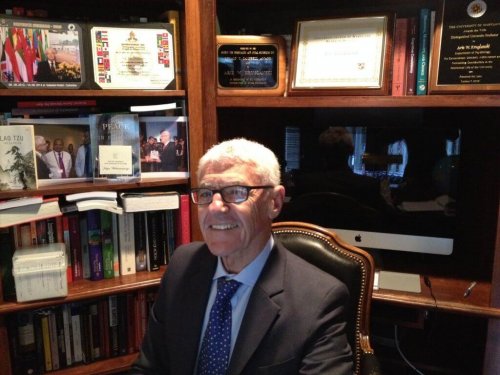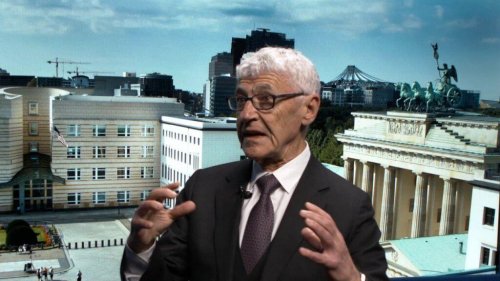Arie Kruglanski: Cognition, Motivation, and Radicalization

Arie Kruglanski is a professor at the University of Maryland. Despite the fact that he was born in Poland, he has spent most of his life in the United States, where he has contributed to the development of different important theories. Although he began studying the theory of cognitive closure, he has made contributions in various fields. In fact, many different articles and books mention a lot of his discoveries.
Among Arie Kruglanski’s contributions, the need for cognitive closure, motivational preparation, and the search for meaning are the most important. Each of these theories influences the others. Thus, his last theory, search for meaning, aims to explain the motivations of terrorists by using the other two previous theories.
Arie Kruglanski and the need for cognitive closure
Arie Kruglanski developed the need for cognitive closure, which corresponds to the desire to give a quick answer to a question whose content is either confusing or ambiguous. Basically, closure puts an end to that search and helps us gain knowledge. Therefore, closure is necessary on a day-to-day basis so that we’re not continuously looking for information.
Those who have a high need for closure quickly overcome uncertainty since they make use of available clues. Through these clues, they draw plausible conclusions. Thus, if the clues are wrong, they may end up defending the wrong ideas. Since the members of our groups are the greatest sources of certainty and knowledge, they can provide us with cognitive closure. Thus, these people will tell us what the world is like, what we should do in different situations, who they are, and why they’re important.

Motivational preparation
According to Arie Kruglanski, longing for something equals intense desire. These desires can be material or symbolic. On many occasions, these desires arise due to the influence of the environment or our loved ones. Consequently, desires have two components: magnitude and content. Magnitude refers to how much we want something and content represents what we actually want.
On the other hand, we also have an expectation regarding this desire: the estimated probability that our desire will be satisfied. Expectation will depend on our previous experiences and on what others think. If our friends believe that we can achieve our goal, we’ll have higher expectations. It’s important to note that there are other factors, such as optimism or cost, that can influence our expectations.
In fact, desire and expectation influence each other. Thus, our expectations of satisfying our desire will depend on how strong our desire is in the first place. However, it can also be the other way around. The higher the expectations, the greater the desire. A goal will arise when they’re both at a high level, which is when we’ll get the proper motivation to meet that goal.

The search for meaning
Arie Kruglanski also said that we all have a need for meaning, to feel that we’re important and that we have goals and values that influence the decisions we make. We become motivated when we lose meaning and when we find an opportunity to gain it. This motivation is the search for meaning, which leads us to, as its name suggests, seek meaning.
Once we’re motivated, we’ll look for the means to obtain meaning. We can find said meaning in different narratives or ideologies. If these narratives tell us that violence is the only possible way to achieve meaning and our social network supports the use of violence, we’ll end up becoming violent. In other words, if our group supports violence and we’re looking for meaning, we may end up using violence. According to Kruglanski, this is the path that terrorists follow.
As you can see, Arie Kruglanski has made great contributions to psychology, especially in the fields of cognition, motivation, and terrorism. His theories of cognition and motivation gave way to his other theory, which allows us to understand how people radicalize and end up joining terrorist organizations.
Arie Kruglanski is a professor at the University of Maryland. Despite the fact that he was born in Poland, he has spent most of his life in the United States, where he has contributed to the development of different important theories. Although he began studying the theory of cognitive closure, he has made contributions in various fields. In fact, many different articles and books mention a lot of his discoveries.
Among Arie Kruglanski’s contributions, the need for cognitive closure, motivational preparation, and the search for meaning are the most important. Each of these theories influences the others. Thus, his last theory, search for meaning, aims to explain the motivations of terrorists by using the other two previous theories.
Arie Kruglanski and the need for cognitive closure
Arie Kruglanski developed the need for cognitive closure, which corresponds to the desire to give a quick answer to a question whose content is either confusing or ambiguous. Basically, closure puts an end to that search and helps us gain knowledge. Therefore, closure is necessary on a day-to-day basis so that we’re not continuously looking for information.
Those who have a high need for closure quickly overcome uncertainty since they make use of available clues. Through these clues, they draw plausible conclusions. Thus, if the clues are wrong, they may end up defending the wrong ideas. Since the members of our groups are the greatest sources of certainty and knowledge, they can provide us with cognitive closure. Thus, these people will tell us what the world is like, what we should do in different situations, who they are, and why they’re important.

Motivational preparation
According to Arie Kruglanski, longing for something equals intense desire. These desires can be material or symbolic. On many occasions, these desires arise due to the influence of the environment or our loved ones. Consequently, desires have two components: magnitude and content. Magnitude refers to how much we want something and content represents what we actually want.
On the other hand, we also have an expectation regarding this desire: the estimated probability that our desire will be satisfied. Expectation will depend on our previous experiences and on what others think. If our friends believe that we can achieve our goal, we’ll have higher expectations. It’s important to note that there are other factors, such as optimism or cost, that can influence our expectations.
In fact, desire and expectation influence each other. Thus, our expectations of satisfying our desire will depend on how strong our desire is in the first place. However, it can also be the other way around. The higher the expectations, the greater the desire. A goal will arise when they’re both at a high level, which is when we’ll get the proper motivation to meet that goal.

The search for meaning
Arie Kruglanski also said that we all have a need for meaning, to feel that we’re important and that we have goals and values that influence the decisions we make. We become motivated when we lose meaning and when we find an opportunity to gain it. This motivation is the search for meaning, which leads us to, as its name suggests, seek meaning.
Once we’re motivated, we’ll look for the means to obtain meaning. We can find said meaning in different narratives or ideologies. If these narratives tell us that violence is the only possible way to achieve meaning and our social network supports the use of violence, we’ll end up becoming violent. In other words, if our group supports violence and we’re looking for meaning, we may end up using violence. According to Kruglanski, this is the path that terrorists follow.
As you can see, Arie Kruglanski has made great contributions to psychology, especially in the fields of cognition, motivation, and terrorism. His theories of cognition and motivation gave way to his other theory, which allows us to understand how people radicalize and end up joining terrorist organizations.
All cited sources were thoroughly reviewed by our team to ensure their quality, reliability, currency, and validity. The bibliography of this article was considered reliable and of academic or scientific accuracy.
- Kopetz, C. E., y Fishbach, A. (2018). The motivation-cognition interface: From the lab to the real world: A festschrift in honor of Arie W. Kruglanski. New York: Routledge.
This text is provided for informational purposes only and does not replace consultation with a professional. If in doubt, consult your specialist.







